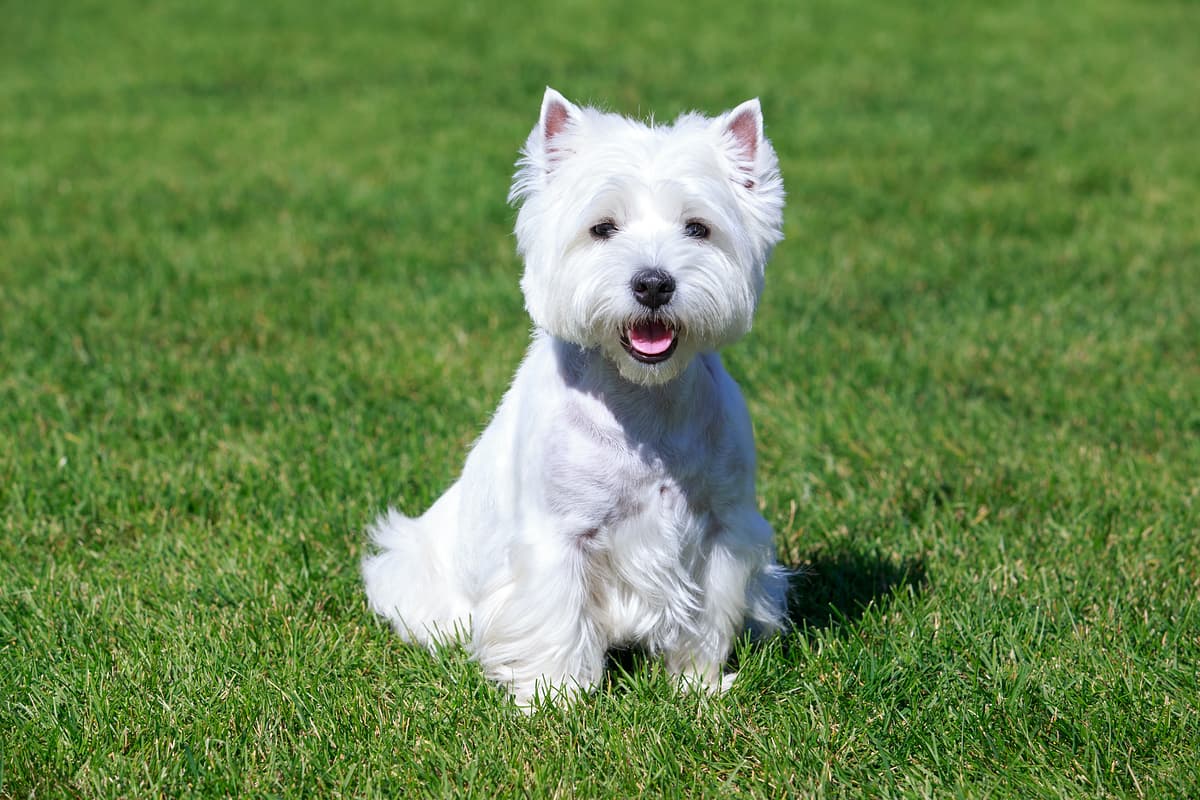West Highland White Terrier vs Labrador Retriever
Discover the differences between West Highland White Terrier and Labrador Retriever to make the best choice for your situation.
Try different breeds

West Highland White Terrier
Bold, lively, and affectionate, this small terrier thrives on companionship and adventure. Always alert and charming, it brings energy and cheer to any household.

Labrador Retriever
Eager, friendly, and intelligent, this breed loves being part of an active family. Their gentle nature and loyalty make them outstanding companions for all ages.
Quick comparison
Small
7–10 kg
Double coat, harsh outer layer
12–16 years
6–7 kg
Moderately active
Large
29–36 kg
Short double coat, water-resistant
10–12 years
25–32 kg
High energy
Personality & behavior
Compare the personality traits and behavioral characteristics of both breeds.
West Highland White Terrier
Outgoing with people and other friendly dogs
Quick learner, responds well to training
High activity needs, enjoys regular exercise
Loves games and interactive play sessions
Adjusts well to various home environments
Labrador Retriever
Warm and sociable with people and animals
Quick learner, responds well to training
High stamina, enjoys active pursuits daily
Loves games and interactive activities
Adjusts easily to new situations and environments
Care needs
Exercise, grooming, and daily care requirements
West Highland White Terrier
Skin allergies, patellar luxation
Labrador Retriever
Hip dysplasia, elbow dysplasia
Suitability
How well each breed fits different living situations and families
West Highland White Terrier
Good option
Generally easy to train but needs consistent boundaries and supervision
Apartment friendly
Small size and moderate exercise needs suit compact living spaces well
Moderately suitable
Enjoys play and walks but doesn’t require constant high activity
Usually good
Playful and sturdy but should be supervised with very young children
Can be selective
May be territorial or chase smaller pets unless socialized early
Not ideal
Dislikes being left alone and can develop separation anxiety or destructive habits
Labrador Retriever
Great choice
Patient and eager to please, Labradors are manageable for most first-time owners.
Not ideal
Labradors need space and exercise, so apartments can limit their activity needs.
Perfect fit
High energy and stamina make them excellent for active individuals or families.
Highly suitable
Gentle temperament and playful nature make them safe and loving with young children.
Very friendly
Generally sociable and get along well with other dogs and pets.
Prone to anxiety
Extended alone time can lead to boredom and destructive behaviors in this breed.
Breed strengths
What each breed excels at and their best qualities
West Highland White Terrier
- Alert watchdog instincts and quick response
- Adaptable to various living environments
- Friendly with children and most families
- Low-shedding, easy-to-maintain double coat
- Energetic and enjoys daily exercise
Labrador Retriever
- Friendly and sociable with people and dogs
- Highly trainable and eager to please
- Excellent with children and families
- Strong retrieving and swimming abilities
- Generally adaptable to various living situations
Challenges & considerations
Potential challenges and considerations for each breed
West Highland White Terrier
- Prone to stubbornness during training sessions
- Can be territorial with other dogs
- Needs consistent mental and physical stimulation
- Tendency to dig due to hunting instincts
- May develop skin allergies or sensitivities
Labrador Retriever
- Prone to obesity without portion control
- Can become destructive if under-exercised
- Heavy seasonal shedding requires regular grooming
- May develop hip or elbow dysplasia
- Needs significant daily physical activity
Ready to choose your perfect breed?
Learn more about each breed or compare other breeds to find the perfect match for your lifestyle.
Discover more helpful tools
Make use of our other free tools to get the most out of your pet experience
